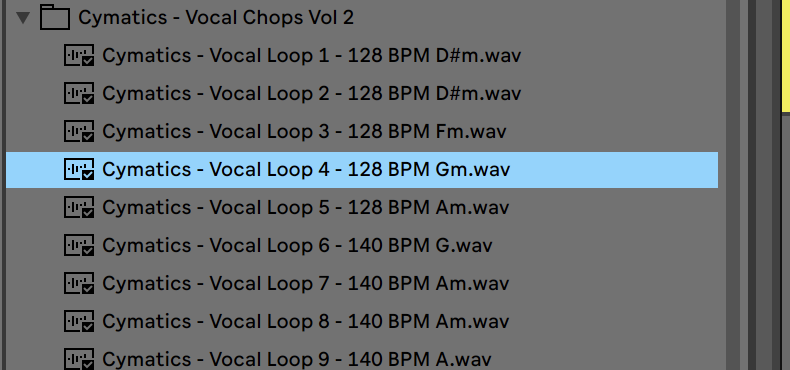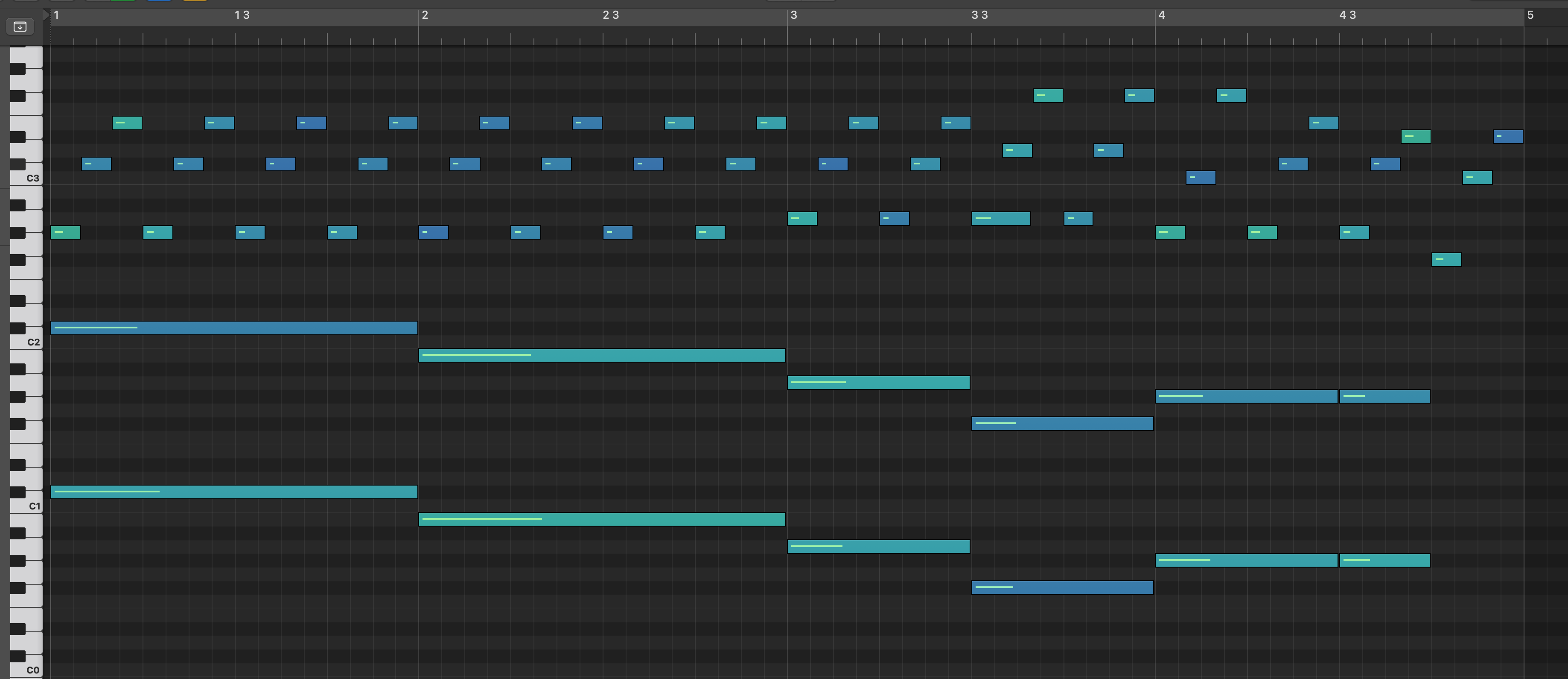Contents
1. Key
It is explained before that all the instruments should (basically) play the same scale in a scene of a song. To designate a scale, we have another term : Key.
When a song is made mainly with C major scale, we say like…
Saying that “This song is C major scale” sounds strange. As strange as Japanese saying “I am Japan”. The 3-letter-word “key” conveys the meaning “the state that a song played chiefly with XXX scale“.
Or you can use this term without specific tonal center:
Since you’ve already got what a scale is, you’ve almost understood the concept of the key as well.
This song is made upon C major scale, so it’s a C major key song. That’s it!
- Key
- The information of which tone is set as center and what scale is mainly used through a song, or within a part of a song.
For Non-Western Scales
Though there are tons of scales, since the term “key” is rooted in Western music theory, scales other than major/minor are out of its scope. There’s a scale called “Arabic scale” but there’s no term like “Arabic key”, or there’s a “Spanish scale” but no “Spanish key”. Therefore this concept is sometimes called “major-minor key system”.
2. Modulation
Changing a key during a song is called Modulation. In popular music, typically, modulation is used to make the last chorus part more gorgeous.
This song starts in the key of A major, but at the beginning of the last chorus (3:10), it changes its key to B major. By transposing the song 2 semitones higher, it creates the feel of reaching the climax.
The utilization of modulation is extensive, with some genres featuring numerous modulations within a single piece, sometimes occurring dozens of times. However, it’s essential to first understand techniques within a single key. Therefore, I will postpone the explanation of modulation until Chapter IV.
3. Relative Keys
As already mentioned again and again, C major scale and A minor scale consist of exactly the same members.
The two are called relative scales. Similarly, C major key and A minor key are in the relationship called Relative Keys.
And since the distinction between relative scales is vague, so is relative keys. In some cases you cannot clearly tell whether a song belongs to a major key or its relative minor key. This is a natural result. Music is by nature not binary (simple 0 or 1 system), which traditional theories can’t handle well. So imagine like a song may waver between relative major/minor keys.
4. Key Signature
Lastly, I have to explain how you indicate a key in musical score.
This is E major scale and songs based on this scale is in the key of E major. 4 notes are sharpened so will scores be full of sharp signs??
- Ravel “Jeux d’eau”
This is an E major key song. If we transcribe this…
Oh no this is unreal!🥶 This is just too lacking in aesthetic sense.
So, the following method was devised—regarding the notes primarily sharpened/flattened due to the scale, by declaring sharps once at the beginning of the staff, it would affect all subsequent instances of those notes.
Sharp for F,C,G,D are declared at the beginning; These sharps (or flats) are called Key Signature.
It literally acts as a “signature”; it signs a contract that all notes signed there will be sharpened afterward, regardless of octaves.
The “contract” persists until the end of the row. So have a look at some scores and you’ll find these key signatures written on every row.
Accidental
Ordinary sharps/flats are still used as well when you want to temporarily alter a note (=a note outside the key).
These temporary sharps/flats are called Accidentals. The effect of an accidental is limited. It expires at the end of a bar1, and notes in different octaves are not affected.
Advantages of Sheet Music
Here, you come to realize one of the advantages of sheet music. It’s the ability to instantly distinguish between the notes within the key and those outside.
This is the beginning of Beethoven’s “Moonlight Sonata”. I’ve included a piano roll, but can you tell which notes are outside the key? …Hmm, you might need to stare at the screen for a bit. If it’s sheet music, it would look like this:
You can see the natural(♮) and sharp accidental symbols in the lower staff, right? It’s instantaneous! Also it’s crystal clear whether the notes have shifted up or down from their original state. This way, staff notation is optimized for major/minor key music, making it easy to spot notes that are outside the key.
The piano roll literally contains only positional information on the piano keyboard. In contrast, sheet music actually holds the “context”, the “meaning” of the music as data. This difference may sound puzzling, but it’s truly crucial. That’s why I encourage you to gradually become familiar with sheet music.
That said, on this site, explanations are primarily given using audio sources, as you’ve already seen. And I will also make use of keyboard diagrams and piano rolls. So even if you can’t read sheet music fluently, you should be able to follow along with the text. Rest assured!
“Key” is the concept you often encounter in songwritings. For example, melodic loops in sample packs have key information in its file name.
 “m” stands for “minor”.
“m” stands for “minor”.Now you can tell what scale will fit for these samples!
Summary
- A key indicates where the tonal center is and what scale is mainly used in a song.
- Tonality means the presence of tonal center. Music with tonality is called tonal music.
- Key signatures are used for the economy of score. Other ♯♭ are accidentals.


